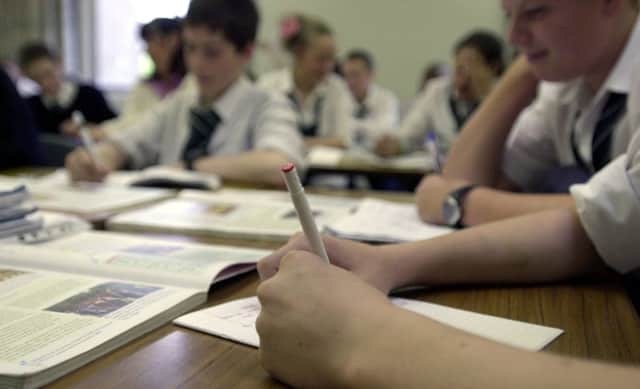Northern schools report: How Yorkshire lags behind and the '˜beacon schools' making a difference


However it also highlights schools in the region which have been successful in delivering good outcomes for pupils from deprived backgrounds.
The report from the Institute for Public Policy Research (IPPR) North and Teach First also shows substantial variations in performances between regions and local authority areas of the North.
Advertisement
Hide AdAdvertisement
Hide AdMost local authorities in the North West and North East outperform the English average, with Redcar and Cleveland, Trafford and Warrington all outperforming most London boroughs.
But the majority of authorities in Yorkshire and the Humber have results below the national average.
Secondary school attainment in some parts of the North is the stage where educational inequalities really widen sharply and it is not just a problem for satellite and coastal towns, such as Blackpool and Oldham.
Even some major cities struggle to raise attainment, with less than a third of disadvantaged pupils in Liverpool, Leeds and Sheffield achieving five good GCSEs including English and maths.
Advertisement
Hide AdAdvertisement
Hide AdThe percentage of children assessed as having a “good level of development” in the North ranges from 63 per cent (North East) to 65 per cent (Yorkshire and the Humber), compared with 67 per cent and 70 per cent for London and the South East respectively.
In Hartlepool, 58 per cent of children eligible for free school meals achieve a good level of development, the same as in London, but in Stockton-on-Tees only 38 per cent do so, one of the worst-performing local authorities in the country.
Nationally, 66 per cent of children eligible for free school meals attain level four or above at Key Stage 2 in reading, mathematics and writing, compared with 83 per cent of other children, an attainment gap of 17 percentage points.
Those in the North East and North West actually perform better than the national average, with 67 per cent of pupils eligible for free school meals meeting the benchmark.
Advertisement
Hide AdAdvertisement
Hide AdMeanwhile those from Yorkshire and the Humber perform below the national average, with just 62 per cent meeting the benchmark.
Following various “city challenge” initiatives in recent years, deprived pupils in city areas have been targeted.
But while Greater Manchester and Liverpool stand out within the North West, the bottom half of the rankings are dominated by major cities, including Leeds, Sheffield, Bradford and Doncaster.
Similarly, within the North East, Newcastle and Middlesbrough have some of the lowest results for disadvantaged pupils.
Advertisement
Hide AdAdvertisement
Hide AdThe North East and Yorkshire and the Humber perform particularly badly in terms of the size of the attainment gap.
The North West has a few examples of authorities which have a narrower attainment gap than the national average, including Blackburn with Darwen, Halton, Bury, Bolton, Manchester and Rochdale.
The report features beacon schools where at least half of pupils from deprived backgrounds in the North achieve the five good GCSEs, including English and maths, benchmark.
This includes St Mary’s College in Hull where 25 per cent of pupils are from disadvantaged backgrounds and 76 per cent of them achieve the benchmark.
Advertisement
Hide AdAdvertisement
Hide AdKelvin Hall School, also in Hull has 40 per cent students from disadvantaged backgrounds and 59 per cent of them achieved the benchmark.
Other schools listed for helping disadvantaged pupils to achieve well include Dixons City Academy, in Bradford, Batley Girls High, Nether Hall Learning Campus, in Huddersfield, Batley Business and Enterprise College and Pudsey Grangefield School in Leeds.